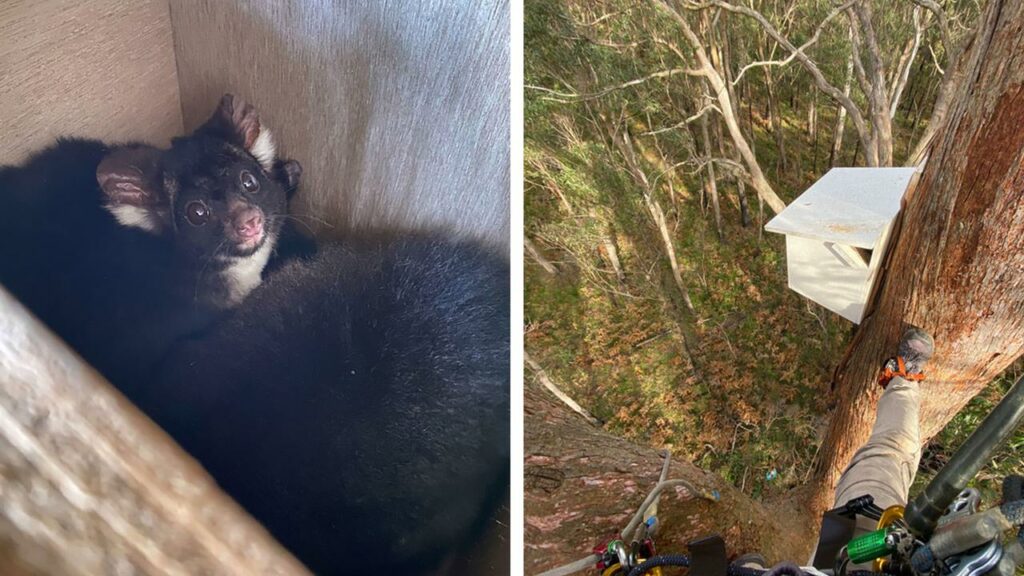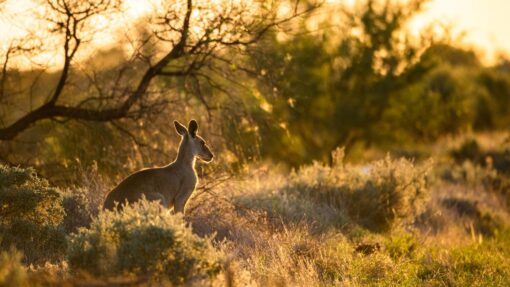Fire-hit gliders dig cool new tree homes
Tracey Ferrier |

Researchers are elated after greater gliders hit by the Black Summer fires moved into new hi-tech Goldilocks homes that are not too hot, not too cold but just right.
The world’s largest gliding marsupial was a threatened species before ferocious bushfires wiped out almost a third of its habitat a few years ago.
Its official status has since worsened to endangered.
In the wake of the fires, experts quickly realised they would need to provide temporary housing after the loss of so many mature, hollow trees gliders use for shelter.
But they also faced a problem: gliders are incredibly temperature sensitive and won’t eat if they get too hot.
That’s a big problem for a species that carries little fat and relies on low-calorie eucalypt leaves for food and water.
The solution was a hi-tech re-imagining of the traditional nesting box, incorporating insulation, air gaps and heat-reflective, fire-resistant coatings to keep the gliders comfortable.
Kita Ashman, from WWF-Australia, dubbed them Goldilocks boxes, after the children’s tale about a girl who enters the forest home of three bears and samples their porridge, looking for one that’s just the right temperature.
The threatened species ecologist says the solution has worked a treat and there is now plenty of proof gliders are using the boxes in the fire-hit Tallaganda National Park, an area in NSW east of Canberra.
Monitoring cameras have caught gliders coming and going and Dr Ashman even saw one poke its head out of one box during a field trip last year. When she was able to look inside, she discovered two more.
“I just burst into tears, I was so surprised and so happy,” she said.
In all, 120 of the boxes were put up at Tallaganda and in state forest in NSW, along with 114 others near Bendoc in East Gippsland in Victoria.
“Seeing greater gliders using the boxes after only 10 weeks was joyous. It shows greater gliders need this assistance after the fires and that the project team did a great job designing the nest boxes,” Dr Ashman says.
But she says the boxes are only a stop-gap measure to help the species repopulate targeted forests after the fires.
The fate of the species will largely depend on halting the threat posed by widespread habitat destruction, including native forest logging.
The Australian National University is monitoring the success of the nesting box intervention.
ANU research fellow Kara Youngentob hopes the boxes will buy time for the bigger changes needed to make ensure gliders don’t disappear.
“Greater gliders depend on old hollow-bearing trees for shelter. It can take trees over 80 years to form these hollows,” Dr Youngentob says.
“Old growth forests are rare now and the greater glider is disappearing with them.”
Greening Australia was also part of the nesting box project and provided the initial design, which was refined and rigorously tested in ANU’s labs before installation.
AAP


